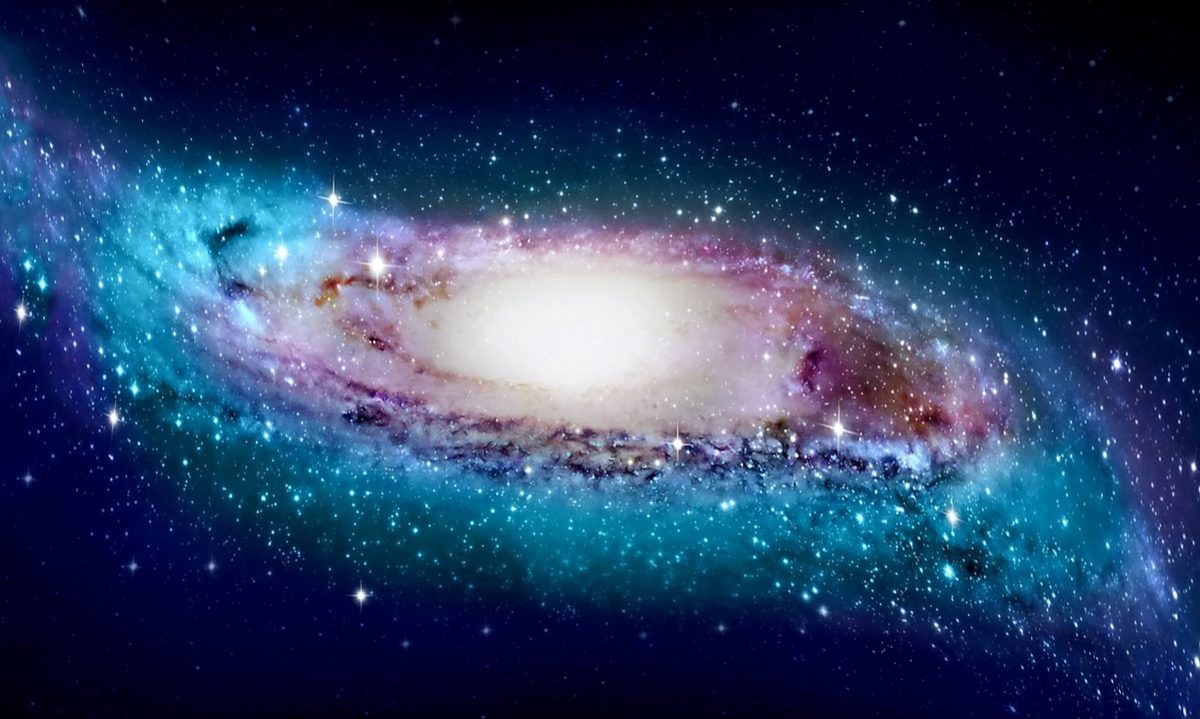
The Milky Way really is warped – like a bent old vinyl record, according to new research.
It becomes increasingly twisted the further away the stars are from its centre.
It’s similar to the phenomenon that happens when LPs are exposed to heat and pressure.
Astronomers have suspected for half a century our disc shaped galaxy is crooked instead of flat.
Now the first accurate 3D map of its kind published in Nature Astronomy reveals they were right.
Co-author Professor Richard de Grijs, of Macquarie University in Sydney, said: “We usually think of spiral galaxies as being quite flat – like Andromeda (our neighbouring galaxy) which you can easily see through a telescope.”
He likened determining the real shape of the Milky Way to standing in his garden trying to work out what Australia looks like.
His team base their finding on 1,339 ‘standard’ stars that show the warped spiral pattern is caused by a massive force experts call ‘torque’.
This is triggered by the spinning of the huge inner disc of suns – making it anything but stable.
Lead author Prof Xiaodian Chen, of the Chinese Academy of Sciences in Beijing, said: ”
“It’s notoriously difficult to determine distances from the Sun to parts of the Milky Way’s outer gas disc without having a clear idea of what that disc actually looks like.
“However, we recently published a new catalogue of well-behaved variable stars known as classical Cepheids, for which distances as accurate as 3 to 5% can be determined.”
That database provided by the Wide-field Infrared Survey Explorer (WISE) allowed the team to develop the first accurate three-dimensional picture of our Milky Way out to its far outer regions.
Classical Cepheids are young stars that are some four to 20 times as massive as our Sun and up to 100,000 times as bright.
Such high stellar masses imply that they live fast and die young, burning through their nuclear fuel very quickly, sometimes in only a few million years.
They show day- to month-long pulsations, which are observed as changes in their brightness.
Combined with a Cepheid’s observed brightness, its pulsation period can be used to obtain a highly reliable distance.
Prof de Grijs said: “Somewhat to our surprise, we found in 3D our collection of 1,339 Cepheid stars and the Milky Way’s gas disc follow each other closely.
“This offers new insights into the formation of our home galaxy.
“Perhaps more importantly, in the Milky Way’s outer regions, we found the S-like stellar disc is warped in a progressively twisted spiral pattern.”
The map sheds fresh light on the evolution of the galaxy – and also shows the warped disc also contains young stars.
Co-author Dr Licai Deng, also of the Chinese Academy of Sciences, said: “This research provides a crucial updated map for studies of our galaxy’s stellar motions and the origins of the Milky Way’s disk.”
A dozen other galaxies with similar progressively twisted spiral patterns in their outer regions have been observed – so the Milky Way’s shape is rare but not unique.
From a great distance our galaxy would look like a thin diss of stars that orbit once every few hundred million years around its central region.
This is where hundreds of billions of stars can be found – together with a huge mass of dark matter.
This is the mysterious invisible material that provides the gravitational ‘glue’ that holds galaxies together.
The pull becomes weaker away from the inner regions. In the far outer disc hydrogen atoms making up most of the galaxy are no longer confined to a thin plane.
This gives the Milky Way its warped appearance – similar to an S-shape.
Co-author Dr Liu Chao, also of the Chinese Academy of Sciences, said: “Combining our results with those other observations, we concluded the Milky Way’s warped spiral pattern is most likely caused by ‘torques’ – or rotational forcing – by the massive inner disk.”
Dr Deng said: “This new morphology provides a crucial updated map for studies of our galaxy’s stellar motions and the origins of the Milky Way’s disk.”
By Mark Waghorn